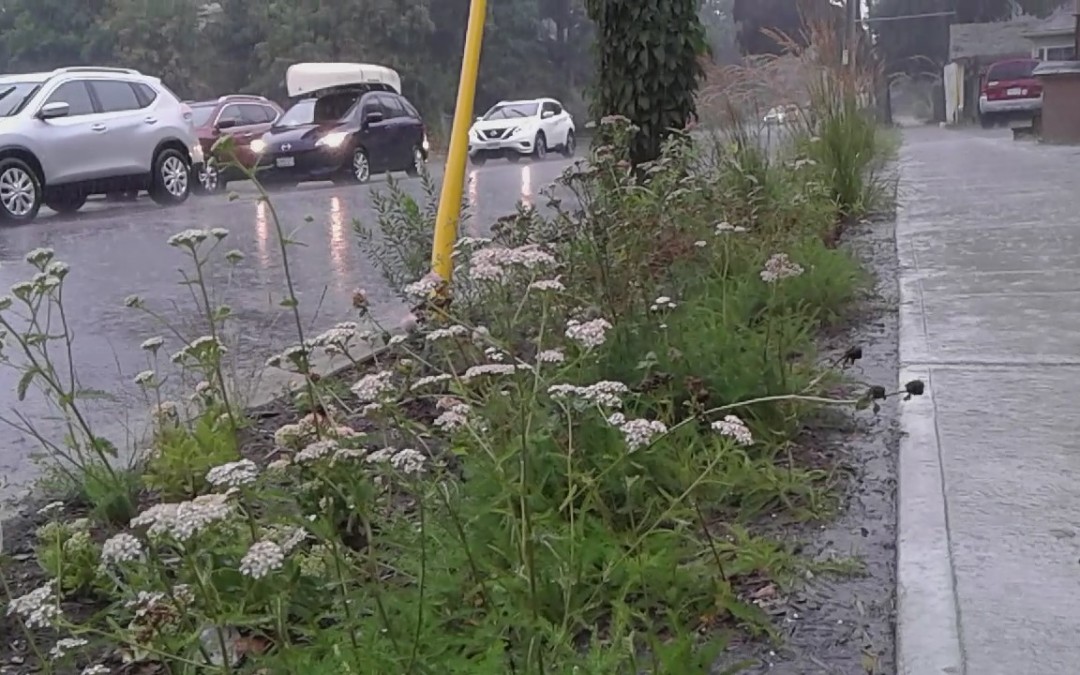Engineers are some of green infrastructure’s biggest champions – but they also include some of its critics. On January 30th, the Ontario Society of Professional Engineers hosted a roundtable to bring together members of the engineering profession (and some outside it) to discuss issues surrounding green infrastructure. I was honoured to be invited to attend and present as part of a panel representing the environmental community.
I found the discussions at this roundtable very encouraging (speaking from my vantage point as a non-engineer, green infrastructure advocate). There was a general acknowledgement that upgrades in stormwater management are needed, because many areas of our cities were built without any modern stormwater controls, and they are both polluting water bodies and at risk of flooding.
What I heard at this event (largely) were engineers taking a holistic view of stormwater management, considering and balancing their responsibilities to protect life, health, property, economic interests, the public welfare and the environment (as laid out in the Professional Engineering Practice Guideline). When all these are taken into account, green infrastructure is, in many cases, a part of the solution.
The discussion that went on in the room provided a more nuanced view of the role of green infrastructure than that presented in a 2018 Financial Post article, in which the Ontario Society of Professional Engineers was quoted as saying “Numerous studies have demonstrated that green infrastructure does not provide a flood risk reduction benefit.” (I wrote a response to this article here). OSPE also responded, clarifying their current position , that “a “blanket” approach cannot be used province-wide to plan, sustain or repair municipal assets such as stormwater infrastructure”, and that natural, green and grey infrastructure projects are all needed in Ontario.
At the event, Sameer Dhalla, P. Eng., of the Toronto and Region Conservation Authority provided many examples of green infrastructure projects from his work in the field, ranging from high tech and expensive, to low tech and low cost, some which were designed to provide flood control benefits, and others which served other purposes.
Ron Scheckenberger, P.Eng. of Wood, an engineering consulting firm, showed studies done for the Town of Oakville that demonstrated that the systematic implementation of green infrastructure (infiltrating 20-25mm) in redevelopment and road reconstruction projects could effectively neutralize the projected impacts of climate change and allow more certainty in planning for grey infrastructure improvements.
Matt Wilson, P.Eng., of the City of Kitchener, spoke of the work being done in that city to implement green infrastructure in road rights of way – he estimated that the addition of green infrastructure costs 3-5% of the total road reconstruction, and costs are falling as contractors become more comfortable with the technology.
From the other perspective (which at this event was an outlier), Robert Muir, P. Eng., shared his work demonstrating that implementation of green infrastructure across all of Ontario would be cost prohibitive and have a very low return on investment when it comes to flood risk reduction benefits. Many of his arguments can be found in his blog post, here.
I applaud OSPE for hosting this event and hope they will continue to engage on this issue.
By Clara Blakelock, Green Communities Canada
This article appeared in the Umbrella Stormwater Bulletin Issue 72.

